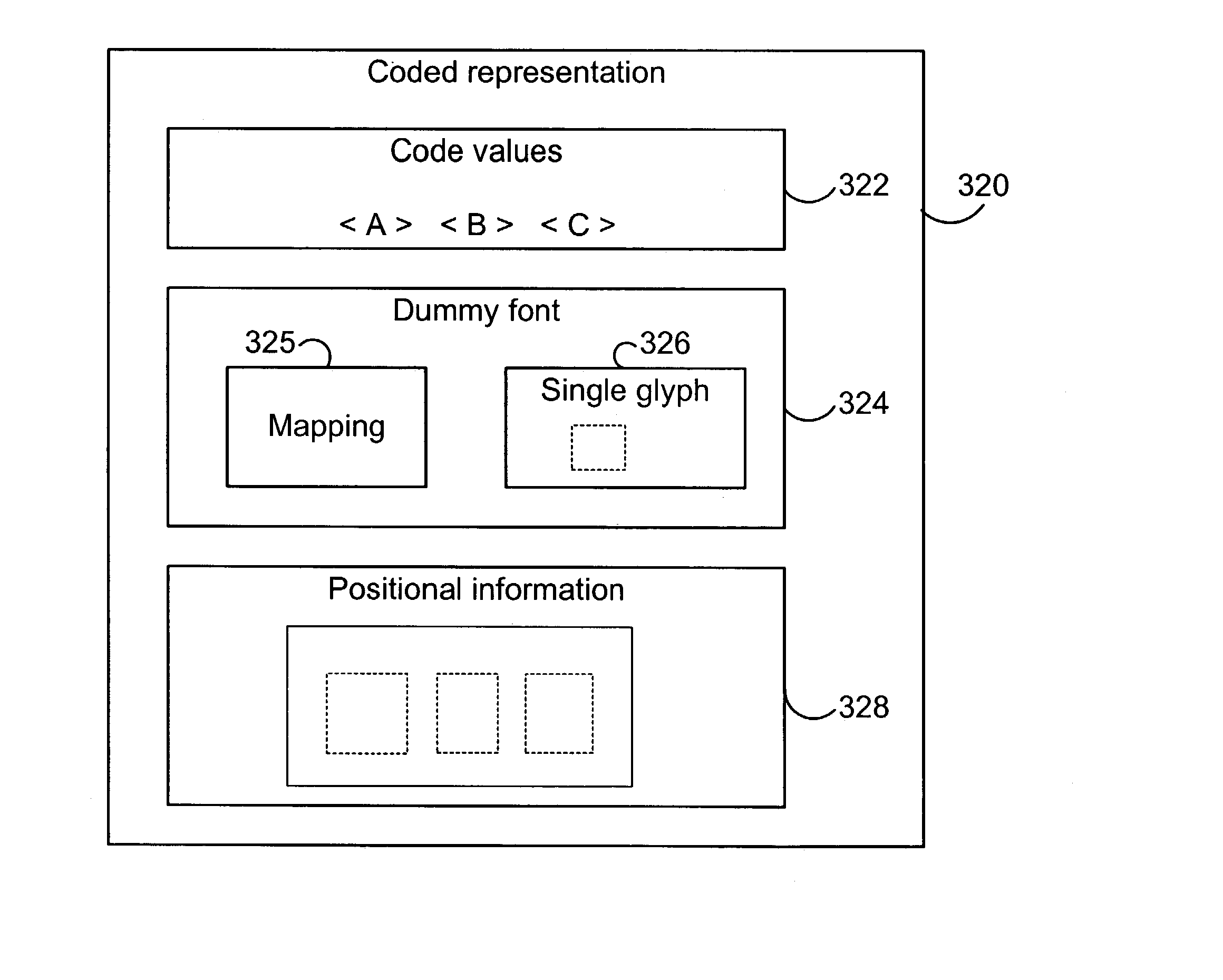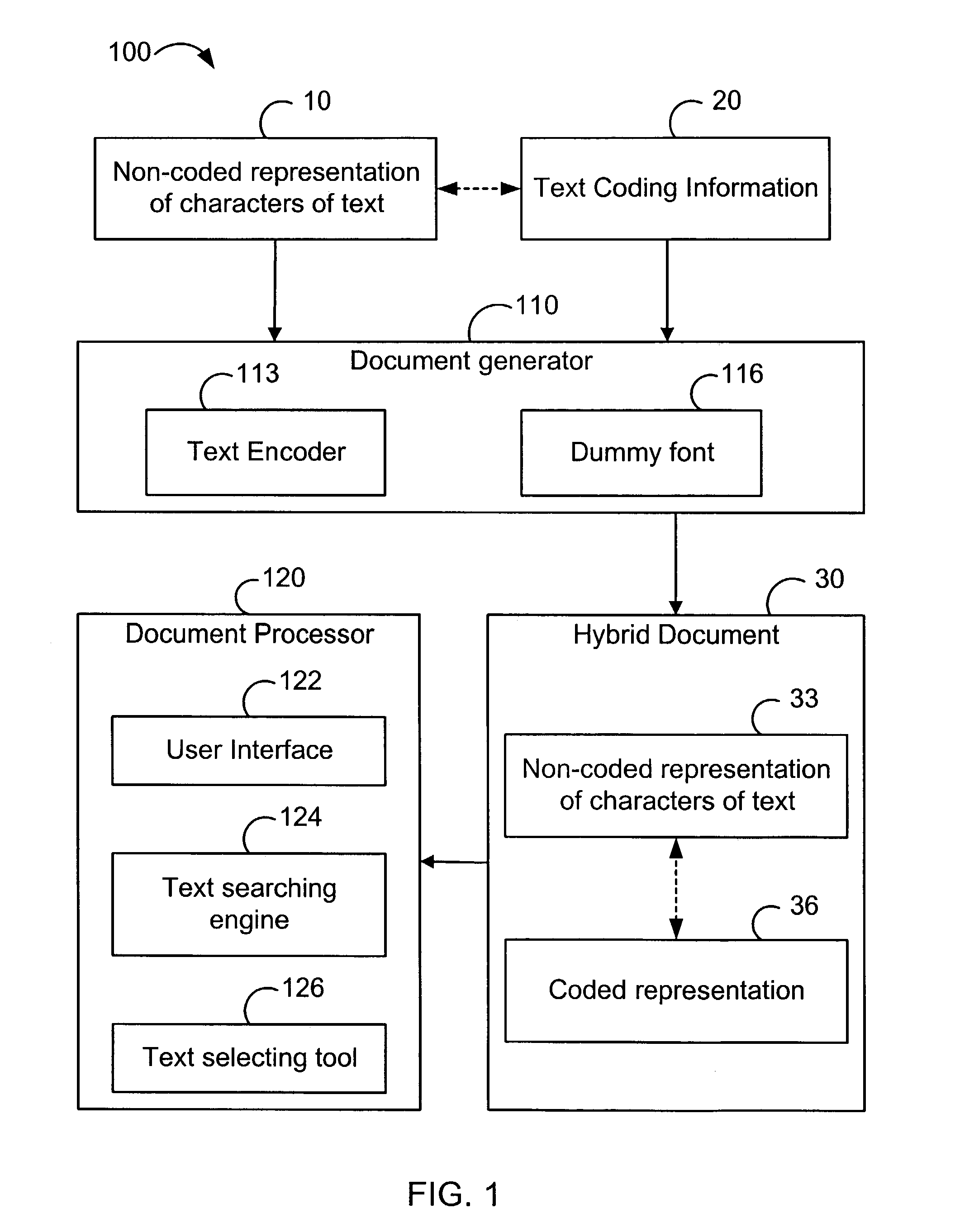Text encoding using dummy font
- Summary
- Abstract
- Description
- Claims
- Application Information
AI Technical Summary
Benefits of technology
Problems solved by technology
Method used
Image
Examples
Embodiment Construction
[0027]FIG. 1 shows a system 100 for generating and processing electronic documents according to one aspect of the invention. The system 100 includes a document generator 110 and a document processor 120. The document generator 110 uses a non-coded representation 10 of characters of text and corresponding text coding information 20 to generate a hybrid document 30 that can be processed, e.g., searched, by the document processor 120.
[0028]The non-coded representation 10 specifies a visual representation, i.e., an image, of text, e.g., in an electronic document. The image of the text can be represented, for example, by bitmap or vector graphics objects. The non-coded representation 10 can be generated, e.g., by a scanner or any other electronic device (e.g., a digital camera) or a computer application (e.g., an image processor) that is capable of generating digital images. Alternatively, the non-coded representation 10 can be generated by an application that prints text to a target doc...
PUM
 Login to View More
Login to View More Abstract
Description
Claims
Application Information
 Login to View More
Login to View More - R&D
- Intellectual Property
- Life Sciences
- Materials
- Tech Scout
- Unparalleled Data Quality
- Higher Quality Content
- 60% Fewer Hallucinations
Browse by: Latest US Patents, China's latest patents, Technical Efficacy Thesaurus, Application Domain, Technology Topic, Popular Technical Reports.
© 2025 PatSnap. All rights reserved.Legal|Privacy policy|Modern Slavery Act Transparency Statement|Sitemap|About US| Contact US: help@patsnap.com



